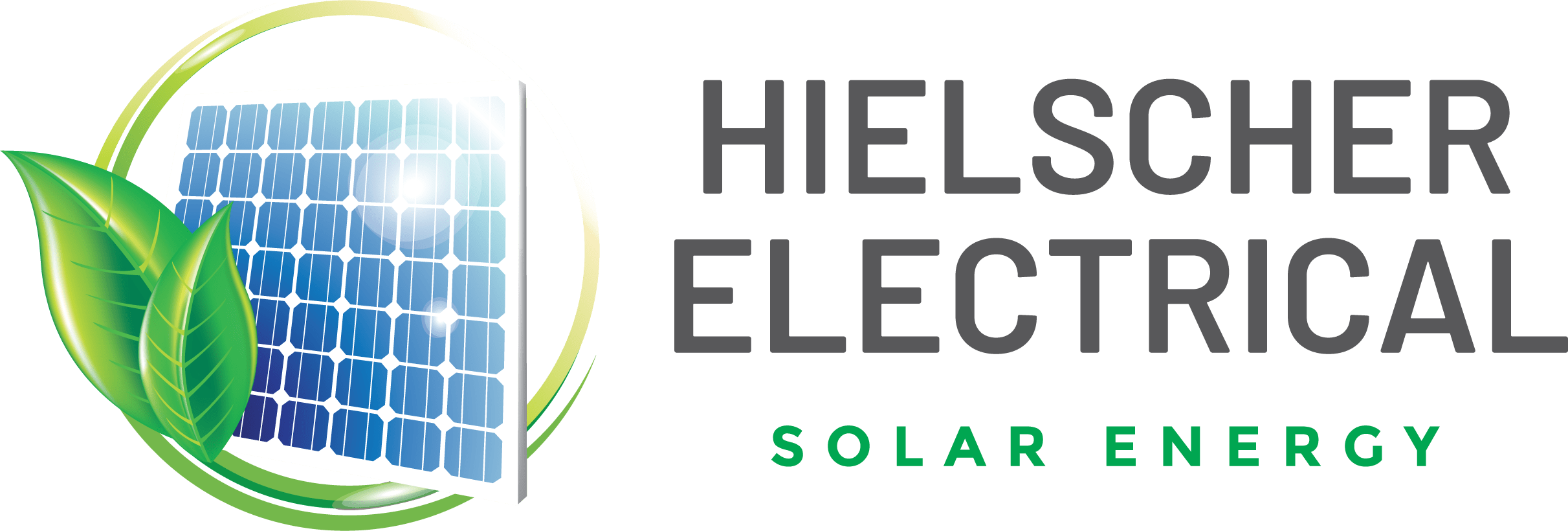We often think of solar energy as a source of renewable, green energy for our homes and businesses. But, have you ever thought about the finer details involved for a quality home solar installation? One essential element of a successful solar energy installation is the DC cable, yet it’s often underestimated or ignored in the process.
In this blog post, we’ll explore all these factors and more in order to ensure your solar installation runs optimally and safely. We’ll provide tips and suggest the best DC cables for Cairns solar installations, so you can rest assured your solar energy system is safe and efficient. Dive in and understand the importance of DC cables for solar installations in Australia!
What exactly is a DC cable?
It’s a cable designed to carry direct current (DC) electricity, as opposed to alternating current (AC), which is used in our everyday home appliances. The main difference between these two types of power is that DC power is unidirectional, meaning current flows in just one direction. This makes it suitable for transferring power from photovoltaic (PV) panels, which generate direct current, to an inverter, which transforms the electricity from DC to AC. The Solar DC cable connects the PV panels to the inverter, allowing the solar energy to be converted into usable electricity.
In Australia, DC cables must be designed for outdoor use, as they are usually laid in roofs and have to withstand variable weather conditions. Furthermore, they must be tough enough to protect the current against any outside interference and vibrations. For these reasons, it’s important to choose the right type of DC cable for your solar installation in Australia. Poorly made cables can be dangerous and may decrease the performance of your solar energy system. They also need to be sized according to the inverter, the panels, and the length of the cable.
How Are DC Cables Made?
DC cables are the essential and vital components for establishing connections between the solar cells of a solar system. DC cables, also known as Direct Current cables, convert the energy produced by solar cells into electrical current which is then used to power homes and buildings. Without DC cables, solar installations in Australia would not be possible. Therefore, it is important to understand the importance of these cables and how they are used to create efficient solar systems.
DC cables are composed of conductive materials such as copper or aluminum, and are set in a dielectric sheath which is waterproof and non-corrosive. This ensures that the connection between the solar cells remains stable and secure. The two main types of DC cables available in Australia are parallel and stranded core, both of which come in a variety of sizes. Parallel core DC cables are ideal for carrying large currents and are used for installations in larger buildings, while stranded DC cables are better for smaller installs and should be used for residential properties.
Advantages of DC Cables
One of the main advantages of using DC cables for solar installations is their efficiency. As the current is directly transferred from the solar cells via the DC cables, there is less heat losses and power generation is more consistent. This means that the solar cells reach their full potential and produce more energy over a longer period of time. Furthermore, DC cables above 6mm thickness are resistant to UV radiation and water damage, making them an ideal choice for outdoor installations.
Overall, DC cables are an essential component for solar installations in Australia. They provide the connection between the solar cells and the panels, and enable the safe and efficient transfer of energy from the cells to power different homes and buildings. As such, it is important to ensure that the correct type of DC cable is used for each solar installation to ensure optimal performance and longevity.
Why Are DC Cables Used for Solar Installations?
DC Cables are special cables used in photovoltaic (PV) systems that enable the transmission of direct current (DC) electricity. Their main function is to carry voltage from the solar modules to the inverter, as well as carrying energy from the inverters to batteries or storage systems. DC Cables are designed to have a low resistance to reduce the power that’s lost on its journey.
DC Cables in Australia must comply with the requirements set out by Standards Australia and the World Trade Organization. The standards require wiring and insulation to be coded so that it can be identified easily. The standards also specify that the cables must be protected against environmental conditions such as heat, dust and moisture. This is especially important in the Australian climate, which experiences extreme temperatures and severe weather.
In Australia, DC Cables are often manufactured from copper, a material that has excellent electrical conductivity. This helps ensure that the cables can effectively transfer the electrical current from the photovoltaic modules to the inverter. Copper is also corrosion resistant, making it ideal for use in an outdoor environment.
Solar panel manufacturers in Australia typically supply the necessary cables for the installation. However, it’s advisable to consult a qualified electrician to make sure the cables meet local regulations and that the installation is safe. If necessary, an electrician can also recommend the most suitable type of DC Cable for the system.
Overall, DC Cables are an essential component of any solar installation in Australia. They are designed to safely and efficiently transport DC electricity between components, ensuring the optimal performance of the system.
Different Types of Solar DC Cables
When it comes to solar installations in Australia, the DC cables used are just as important as the solar panels and other components. Understanding the differences between the different types of DC cables is essential in order to ensure optimal performance and safety.
DC cables can be divided into four main types: multicore cables, RVV cables, cross-linked polyethylene (XLPE) cables, and low smoke zero halogen (LSOH) cables. Multicore cables are made up of insulated cores which are suitable for a wide range of applications and make them popular choices for many solar installations. RVV cables feature two layers of insulation and can provide some protection from harsh weather conditions. XLPE cables are usually favored because they have higher electrical performance capabilities than other types of DC cables while also offering greater protection against external conditions. Finally, LSOH cables provide extra protection against fire and toxic smoke.
Each type of DC cable has specific characteristics which make them better suited to certain applications. For example, multicore cables are generally lighter and more flexible than other types of cables, making them ideal for applications where space is limited. RVV cables offer incredibly strong insulation and therefore can be used in extreme weather conditions such as rain and wind. XLPE cables are ideal for situations where higher resistance to electric shock is necessary. LSOH cables are most often used in applications where the safety of people, animals, or equipment is of utmost importance.
To summarize, it’s essential to understand the differences between the various types of DC cables for solar installations in Australia. Different types of cables come with their own distinct pros and cons, so choosing the right one depends on the application. Multicore, RVV, XLPE, and LSOH cables all have different characteristics that make them ideal for certain situations. Ultimately, selecting the right DC cable ensures an optimal performance in any solar installation while also ensuring safety.
Choosing the Right DC Cables for Your Solar Installation
Choosing the right DC cables is essential for any solar installation project in Australia. Not only do the DC cables have to be sized correctly, they must also be able to handle the power requirements of the system without risk of overload or fire.
The type of DC cable used in a solar installation is based on factors such as the physical routing of the cable and the voltage and current levels required by the system. It is important to consider the ambient temperature and potential for movement or vibration when selecting a DC cable for a solar project. This is because higher temperatures can reduce the cable’s current carrying capacity, while high levels of movement or vibration can lead to abrasion or damage.
The Australian Solar Council recommends the use of double-insulated cables for all solar installations. These cables have additional insulation layers to protect against corrosion and overheating. They are also much less likely to cause sparks or short circuits than single insulated cables.
A key consideration for choosing DC cables for a solar installation is the current rating. This is the amount of electrical current that the cable can safely handle, and it should always be greater than the anticipated current of the system. Overcrowding the cable by exceeding its rating can cause serious damage to the components of the system and increase the risk of fire.
Finally, the cross sectional area of the DC cable should be proportional to the current being carried. As the current increases, the cross sectional area should increase accordingly to ensure the cable can handle the load without overloading.
Getting the right DC cable is key to a successful solar installation in Australia. By following the above advice, you can ensure that your solar system is safe and reliable.
Advantages of Using Quality DC Cables
DC cables are essential for taking power from solar installations to the energy storage devices for efficient operations. Quality DC cables provide several advantages in terms of reliability, safety, and cost reduction when used in solar installations in Australia.
A good quality DC cable offers excellent current carrying capacity that ensures sufficient amount of power is transferred from the solar installation to the energy storage device. This reduces the risk of damage due to overloading due to heavy aluminum sheathing provided on the DC cable. The sheathing also prevents fraying, and in case of junctions, it provides secure splicing, which makes it highly reliable.
The use of quality DC cables also ensures adequate fire protection and safety. The cable should also be designed with superior abrasion resistance and high tensile strength so that the joints are secure and not prone to sudden shocks. Moreover, good quality DC cables provide electrical insulation to protect against overheating and short circuits. This helps eliminate any chances of fire accidents within the solar installation.
Apart from the safety benefits, using quality DC cables also helps reduce maintenance costs. Low quality DC cables can lead to voltage drops, which causes electricity leakage and consequently expensive repair costs. Therefore, investing in quality DC cables helps in minimising the frequency of replacements by providing maximum efficiency.
Quality DC cables are therefore an important component for solar installations in Australia. They are designed to provide strong electrical connections and safe operations, as well as being affordable solutions for reducing energy losses. Therefore, it is important to always invest in quality DC cables for successful solar installations.
Conclusion
In order to maximize the efficiency of solar installations in Australia, the use of DC cables is mandatory. The right DC cable can provide the best performance and safety requirements of the solar system. When choosing a DC cable for installations, it is essential to take factors such as current, voltage and temperature capabilities into consideration. The correct DC cable must also be compliant with Australian regulations.
It is important to remember that DC cables should always be installed by experienced professionals who are qualified to do so. Unqualified personnel may not follow best practices, leading to poor performance and unsafe conditions for workers. Furthermore, using the wrong cable for a solar power system can cause a number of problems, from reduced efficiency to potential fire or other horrors.
To sum up, properly installed DC cables are essential for solar installations in Australia. The chosen DC cables should meet all the necessary requirements while adhering to Australian regulations. It is imperative to use knowledgeable professionals to ensure the right installation and to guarantee your safety. The right DC cable can make a huge difference in the efficiency, performance and safety of your solar system.



